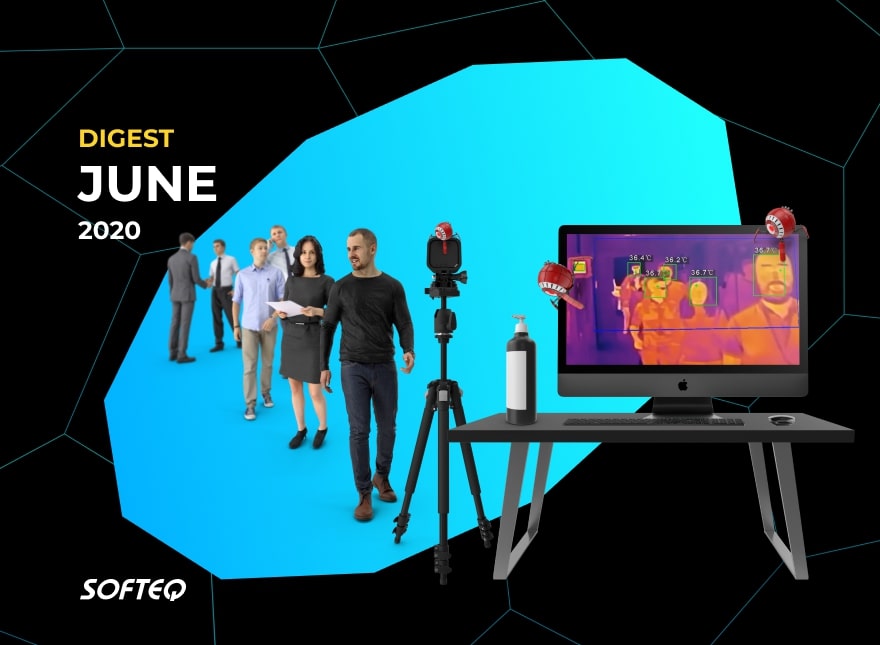Check out our latest blog article: From component to enterprise – modular robotics done right.
This is What Techies Talked about in June

COVID-19 is making the Connected Office a viable reality — but are we ready for it?
As companies are slowly but surely bringing their employees back to the office, the technology market is getting flooded with smart solutions designed to help businesses prevent the coronavirus from spreading in the workplace. These include contact-tracing apps, body temperature monitors with face recognition capabilities, and intelligent sensors that detect the virus in the air. What these solutions often lack is actual COVID-19 testing. To solve this problem, forward-thinking IoT vendors are joining forces with the manufacturers of FDA-approved coronavirus tests. One of these efforts is Covitech, a system that allows employees to check their symptoms at home and measure body temperature in the office. The solution also automatically replenishes protective equipment and disinfectants and tracks the COVID-19 status of individuals employed with a company. Another example comes from Amazon. The eCommerce juggernaut is now deploying social distancing software in warehouses across the USA. The application analyzes live video data and provides immediate visual feedback to employees who fail to keep a safe social distance. But there are two sides to every story. Stacey Higginbotham, a recognized IoT influencer, argues that technology in general — and the Internet of Things in particular — has a long-neglected consent problem. Sensors, cameras, and microphones deployed in the workplace open a window into employees’ private lives, and it’s not always clear how technology companies use this data. The growing adoption of IoT in business also calls for a complete digital overhaul of the existing IT infrastructure. Companies need new business processes, new software, and new hardware to capture critical data and act on it. To learn more about the tools and techniques for planning a successful IoT project, make sure to sign up for the free webinar hosted by IoT for All on June 30.
Factories are getting smarter. How do manufacturing companies venture into IIoT without breaking the bank?
According to Meticulous Research, the Industrial Internet of Things could become a $263.4 billion market by 2027. Given that 85% of factories’ inventory is currently not connected to the Internet, the forecast is looking over-optimistic — even though more companies are turning to IIoT during the deepening economic crisis to manage equipment remotely and avoid unplanned downtime. To implement IoT solutions in industrial settings, businesses need to enhance machines with sensors, programmable controllers, modern HMIs, and data analytics tools. The problem is, much of the equipment used by manufacturing companies today does not support IoT tools by default. To swap out the machines that have not reached their depreciation limits for newer models would be economically unreasonable. Retrofitting legacy equipment using IIoT kits developed by an original equipment manufacturer (OEM) or 3rd-party technology company is an excellent way to venture into the Industrial IoT without significant up-front investments. In cases when there is no suitable retrofit IoT solution available on the market, manufacturing companies could design custom hardware and data analytics tools driven by cloud platforms, such as PTC ThingWorx or AWS IoT. Meanwhile, a healthy combination of cloud and edge computing helps industrial companies process sensor data closer to where it is produced and thus save bandwidth. A decision to adopt smart factory solutions, however, should be driven by business objectives rather than the growing pressure to keep a competitive edge.
